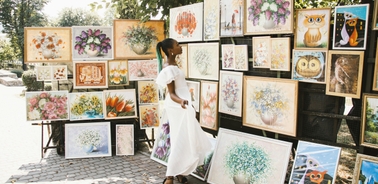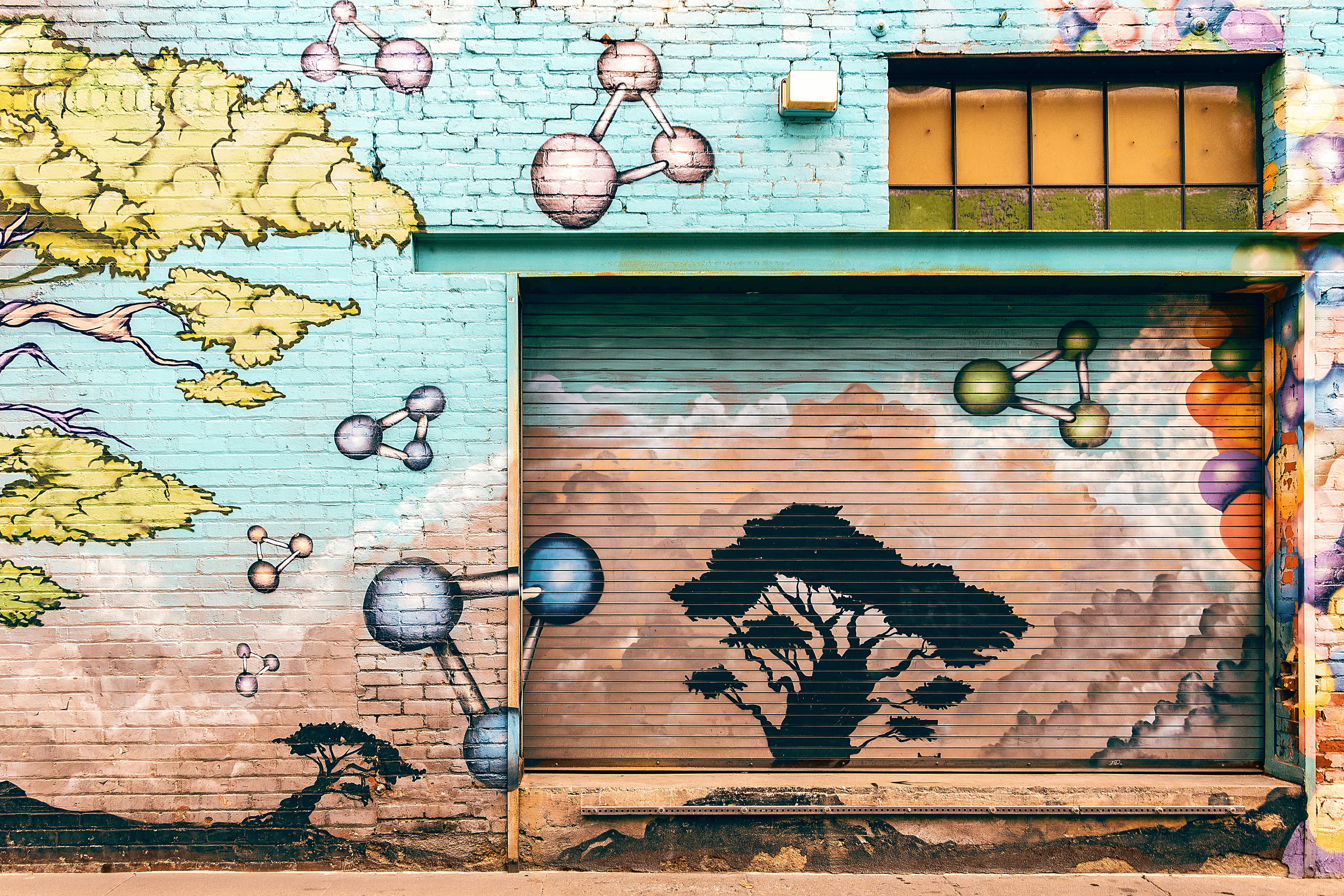The Brain on Arts: How Beauty Rewires the Brain for Resilience and Joy

By Dr. Silvia Centeno
In September 2020, the aftermath of the pandemic, a friend and I decided to start Fundación [H]ARTE, a nonprofit, with the idea of integrating art into hospitals to promote well-being. We organized exhibitions in hospitals aiming to bring warmth and emotional connection to these often impersonal spaces. The goal was to enhance both emotional and physical well-being on patients, caregivers, and healthcare workers alike. This initiative deepened my interest in extended cognition—the idea that our minds are not confined to our brains but are also shaped by the spaces and objects around us. This perspective has driven me to explore how aesthetics, architecture, and design can serve as powerful tools to support mental health, reduce stress, and foster resilience.
One of the most profound insights I have gained from that experience is that aesthetics is not a superficial concern but a necessity, shaping not just our emotions but also our cognitive processes. Our surroundings do not merely reflect our inner state; they actively co-create it. The way we design our spaces, the art we surround ourselves with, and the aesthetics we engage with daily can profoundly influence our emotions, mental resilience, and even physical pain.
One of our most impactful interventions was at the child and teenage psychiatric unit at Hospital Puerta de Hierro in Madrid, where we redesigned the patients bedrooms and common areas with uplifting, carefully chosen paintings. Witnessing firsthand how these changes affected patients, and even the medical staff reinforced what research in neuroaesthetics has been demonstrating: beauty has the power to alleviate pain and improve well-being .
The Science behind beauty and pain perception
Neuroaesthetics, is the study of how the brain processes beauty and art, and has provided fascinating insights into why aesthetics have such a profound impact on us. Research has shown that the same neural pathways activated by physical pain are also engaged when we experience social rejection, loneliness, or emotional distress (Eisenberger et al., 2003). Interestingly, these same pathways can be modulated by positive sensory experiences, including exposure to art, music, and natural beauty.
Studies using fMRI scans have revealed that when people view pleasing images, their orbitofrontal cortex, a region associated with pleasure and reward, becomes highly active (Ishizu & Zeki, 2011). This suggests that beauty triggers the brain’s dopaminergic system, which is responsible for feelings of pleasure and relief. Furthermore, research has found that engaging with creative activities can slow down areas of the brain linked to stress and pain, such as the amygdala and the insular cortex (Cela-Conde et al., 2013).
Art as a non-pharmacological approach to healing
Through Fundación [H]ARTE, we saw these effects firsthand. In hospitals, where patients often feel vulnerable, anxious, and disconnected, exposure to aesthetically enriching environments provided a psychological refuge. We observed that:
• Patients reported feeling calmer and more at ease while spending time at the waiting rooms decorated with curated artwork.
• Hospital staff experienced a boost in morale, as their work environment became more welcoming and less clinical.
• Parents and caregivers expressed relief, finding comfort in a space that felt warm rather than intimidating.
This aligns with findings in healthcare design, where art-integrated hospitals have been linked to lower levels of pain perception, reduced anxiety, and even faster recovery times (Ulrich et al., 2008). The presence of art has been shown to reduce cortisol levels, the stress hormone that increases inflammation and pain (Mastandrea et al., 2019).
Creativity, well-being, and the future of healing spaces
Creativity, well-being, and the future of healing spaces
It is important to remember that creativity is not just about artistic expression—it is also about designing environments that support human flourishing. Whether in hospitals, workplaces, or educational institutions, embedding beauty into our surroundings is a powerful tool for improving mental and physical health.
Call to action: how can you leverage aesthetics in your own life?
Neuroaesthetics teaches us that beauty can be a form of medicine, and the great news is that we all have the power to harness it in our daily lives.
• Look around your environment. Does it inspire you, calm you, or stress you out? How can you introduce small elements of beauty—art, color, nature—to enhance your well-being?
• Engage with creativity daily. Whether through music, painting, or simply appreciating an artwork, immersing yourself in beauty can have measurable benefits on your mood and resilience. If you are experiencing anxiety instead of asking what can I do , ask yourself what can I make today?
• Advocate for aesthetics in shared spaces. Whether in schools, hospitals, or workplaces, we can all push for design choices that support human well-being.
As you explore your own creative potential, remember: beauty is not an extra—it is essential for a flourishing life. Let’s build a world where aesthetics and well-being go hand in hand.
References
• Cela-Conde, C. J., Agnati, L., Huston, J. P., Mora, F., & Nadal, M. (2013). The neural foundations of aesthetic appreciation. Progress in Neurobiology, 103, 65-79.
• Eisenberger, N. I., Lieberman, M. D., & Williams, K. D. (2003). Does rejection hurt? An FMRI study of social exclusion. Science, 302(5643), 290-292.
• Ishizu, T., & Zeki, S. (2011). Toward a brain-based theory of beauty. PLoS ONE, 6(7), e21852.
• Mastandrea, S., Umiltà, M. A., & Sartori, G. (2019). Art and psychological well-being: Linking the brain to the aesthetic experience. Frontiers in Psychology, 10, 739.
• Ulrich, R. S., Zimring, C., Zhu, X., DuBose, J., Seo, H. B., Choi, Y. S., & Joseph, A. (2008). A review of the research literature on evidence-based healthcare design. HERD: Health Environments Research & Design Journal, 1(3), 61-125.
